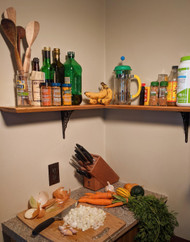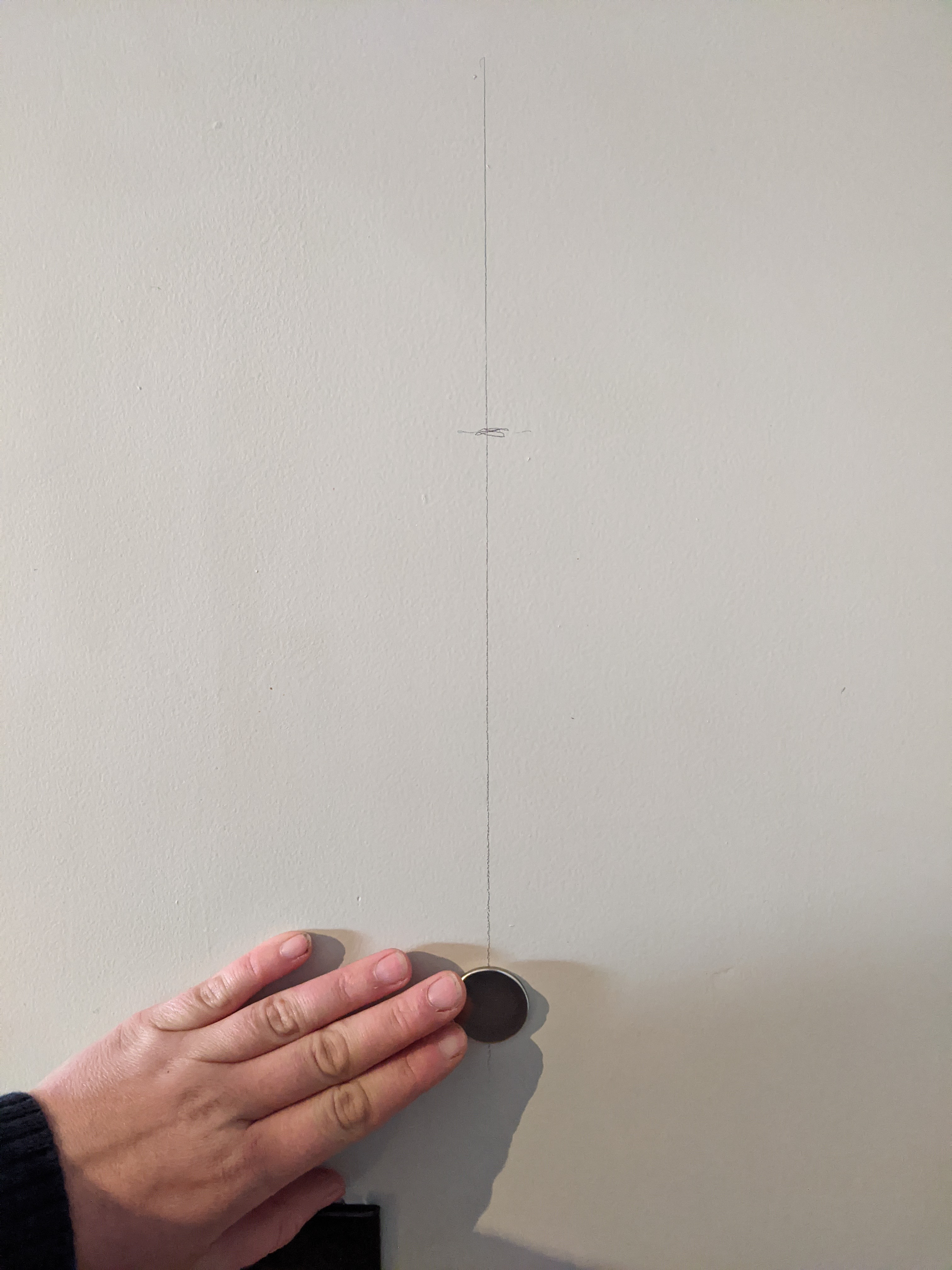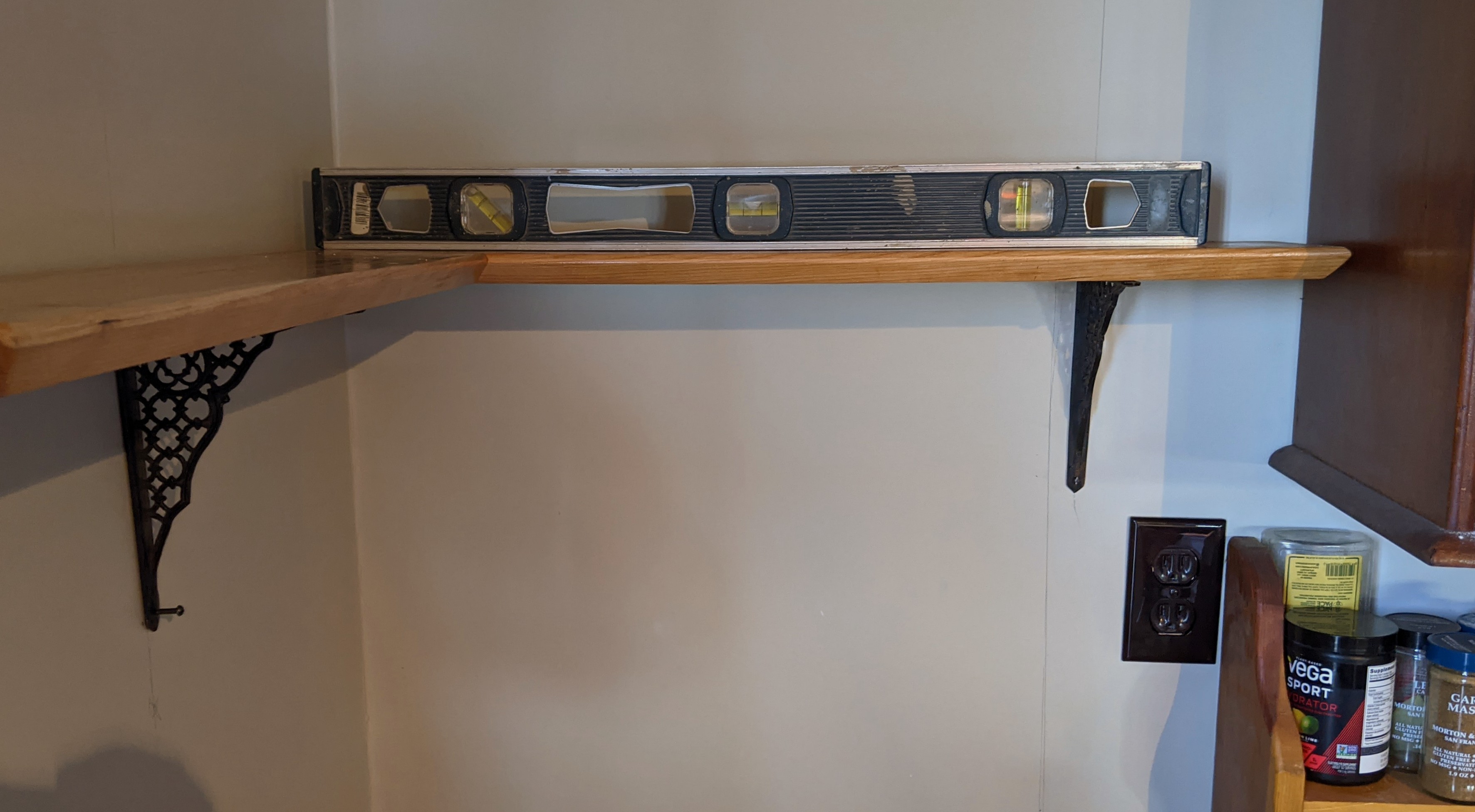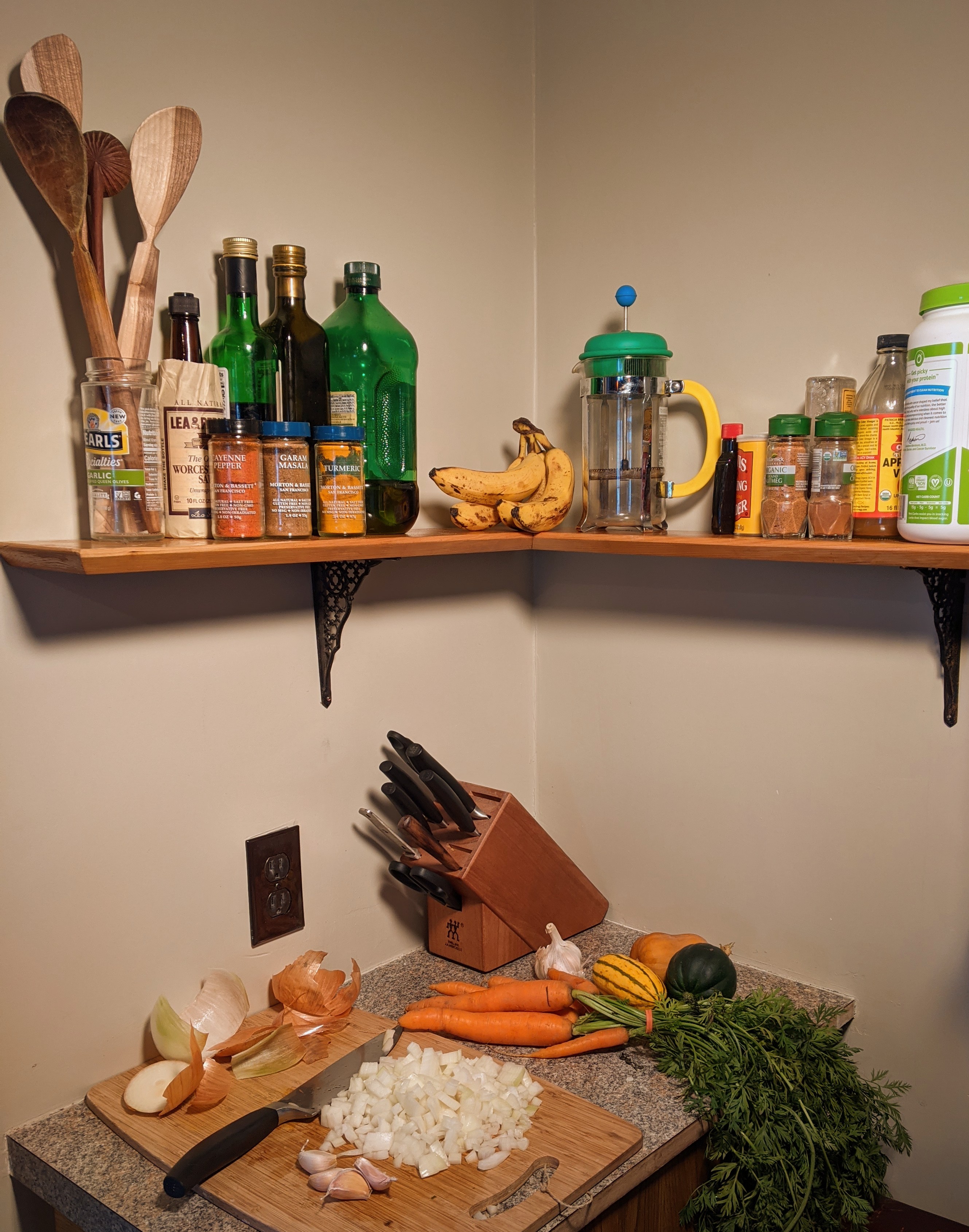Like many, I am spending much more time at home this year. I live in a small cabin with a quaint (read: tiny) kitchen where counter space is prime real estate. Eventually, all my walls will be littered with cute shelves full of useful things and assorted treasures. Every journey begins with one step, so I am starting with the shelf I need the most: a corner shelf for my spices and oil bottles in my kitchen. Shelves are a very simple project and can be much cheaper and higher quality than store-bought offerings. They only require a few key tools and some good planning in order to achieve a high-quality result. For these cherry shelves, I went to my local lumber yard and got some 6” wide short lumber. The brackets are from my father’s collection of antique hardware but can be found at local flea markets and yard sales if you’re lucky. The main skills you will need to make this project a success are chamfering (to plane off corners of wood for a faceted finished look), and cutting and fitting miter joints (joints cut at 45 degrees like picture frames).

Japanese Garden Tools Vs. American: What’s the Difference?
You may have seen Japanese gardening tools popping up more in stores and online. Sure, they&rs… Read More









